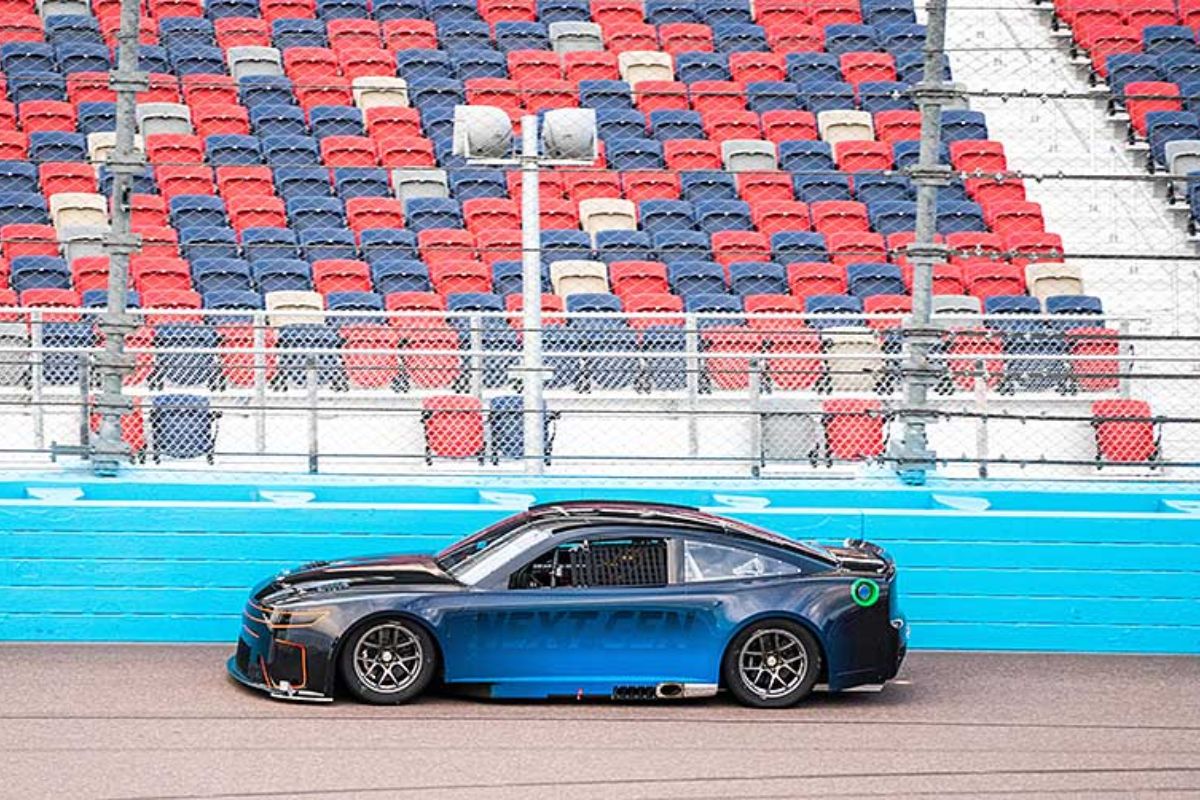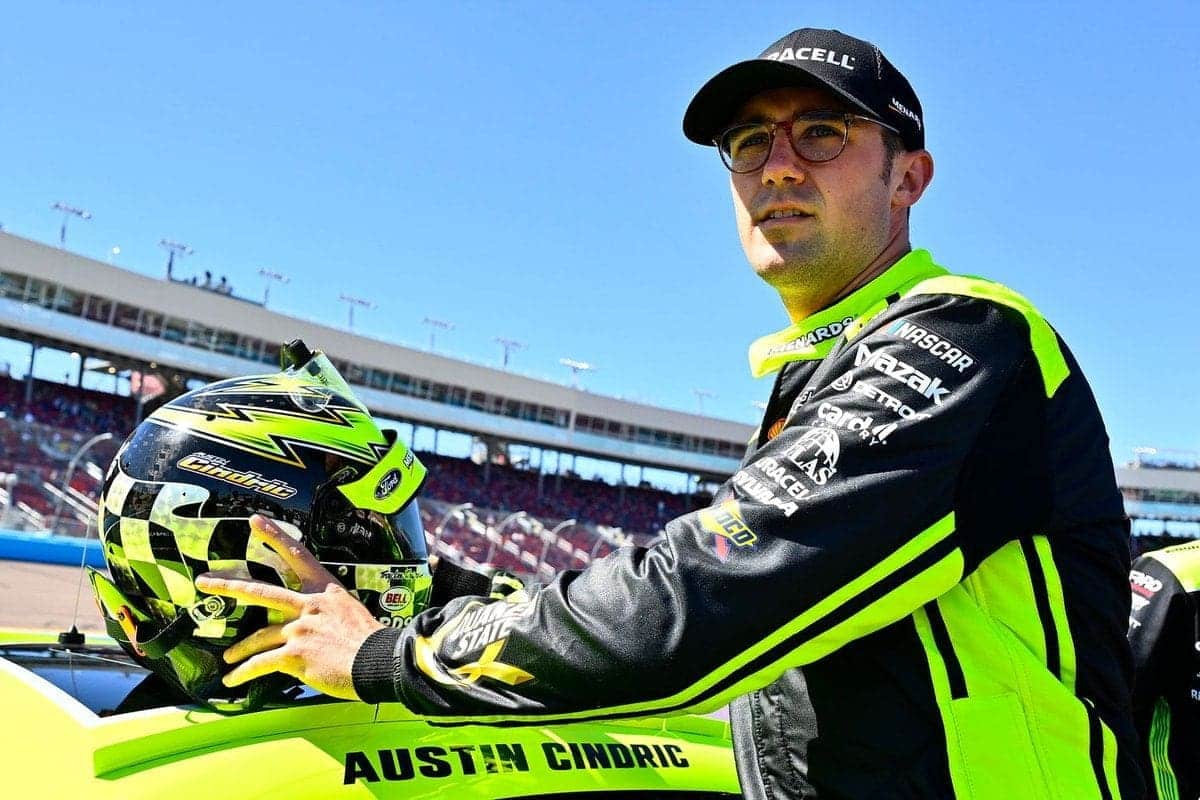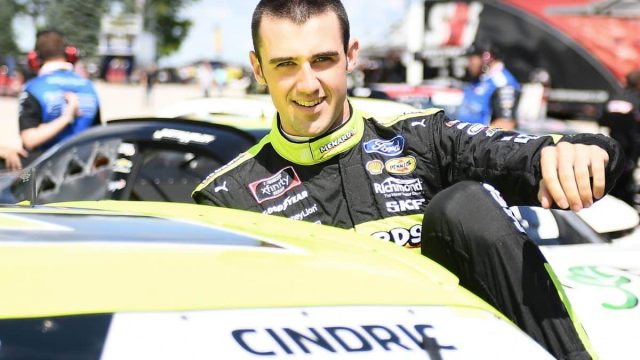Austin Cindric’s Insights on NASCAR’s Next-Gen Cars: Austin Cindric, a well-respected voice in the NASCAR community, highlights the intricacies of the Next-Gen car era, showing a landscape where precision and performance coexist in a delicate balance. He emphasizes the critical balance teams must strike between technological advancements and traditional racing strategies. According to Cindric, even the slightest miscalculation can drastically alter a race’s outcome, prompting a redefinition of racing wisdom. This interplay between intuitive driving and data-driven decisions forms the crux of the Next-Gen challenge.
Key Highlights
- Austin Cindric highlights the necessity for teams to balance performance precision and strategic ingenuity in NASCAR’s Next-Gen era.
- Cindric shows the challenge of integrating traditional driving skills with advanced algorithmic insights.
- He emphasizes the significant impact of minor miscalculations on race outcomes due to reduced margins for error.
- Cindric points out the transformation in racing wisdom required to adapt to the technological advancements in the Next-Gen car.
- He stresses the importance of adaptability and continuous recalibration for drivers and teams facing the complexities of the Next-Gen era.
NASCAR’s Next-Gen Car Challenges
The introduction of NASCAR’s Next-Gen car has presented a variety of technical and strategic challenges that have forced teams to rethink their approach to racing. Designed to revitalize the sport’s competitive edge, the Next-Gen car emphasizes aerodynamic efficiency, intended to boost on-track excitement. However, this shift has not been without its share of obstacles, demanding a thorough reevaluation from teams and drivers.
One of the most significant challenges lies in the car’s aerodynamics. The Next-Gen car features a symmetrical body design, a departure from the previously asymmetric builds. This change impacts airflow dynamics, requiring teams to develop new strategies for optimizing downforce and reducing drag. The delicate balance between these factors is critical, as even minor miscalculations can dramatically affect performance on race day.

Additionally, the new independent rear suspension system has introduced complexities in handling and tire management. Unlike the traditional solid rear axle, the independent suspension allows for more detailed adjustments, which, while offering potential performance gains, also increases the risk of setup errors. Teams must now employ advanced simulations and data analysis to fine-tune suspension settings, a task that demands precision and adaptability.
Dale Earnhardt Jr. has not had the chance to fully understand the issues drivers face in the Next-Gen era. Luckily, the winner of this weekend’s Cup Series explained the biggest problem they deal with.
Austin Cindric’s Insights on Next-Gen Car Complexity
Austin Cindric, a prominent figure in the NASCAR community, recently shared his perspective on the intricacies of the Next-Gen car, emphasizing how the increased reliance on data and analysis has complicated the process of addressing setup issues efficiently. According to Cindric, while the wealth of information available can be a boon, it also introduces complexity that can be challenging to navigate.
“I’ll say for every member on the team, whether that’s crew chiefs, engineers, drivers, or mechanics, it’s the conversation of, ‘Well everybody is got the same stuff. You’re gonna have the same thing that he has. Whether it’s your teammate coming with the same setup or guys we’re racing against that are running better than we are. You know, that conversation…you’d think it would make it easier to find the problem but it makes it harder to solve the problem.” – (Cindric)
One of the key points Cindric highlighted is the sheer volume of data now at the teams’ disposal. This shift from intuition-based adjustments to data-driven decisions necessitates a deeper understanding of:
- Telemetry Data: Real-time data on car performance metrics like speed, tire force, and suspension travel. Teams must sift through this information to make minute adjustments that can have a significant impact on race outcomes.
- Simulation Tools: Advanced software that allows teams to model different race scenarios. While these tools provide a competitive edge, they require specialized knowledge to interpret and apply the findings effectively.
- Aerodynamic Analysis: The Next-Gen car’s design places a premium on aerodynamic efficiency. Understanding airflow dynamics and their implications on car handling is crucial but complex.
- Data Integration: Combining insights from multiple data sources into a coherent strategy. This holistic approach ensures that no single aspect of car performance is overlooked but demands a high level of coordination and expertise.
Impact of Data Saturation on Teams and Drivers
Exploring the maze of data saturation has transformed the roles of teams and drivers, imposing new challenges that extend beyond mere physical performance on the track. As Austin Cindric observed, the sheer volume of data now accessible to teams can be a double-edged sword. While it offers unprecedented insights into every nuance of vehicle performance, tire wear, and track conditions, it simultaneously escalates the demands on drivers to deliver results in an environment where expectations are sky-high.
“It was much easier to just go, yup, we’re gonna look at ourselves, we’re gonna make this solution, and we’re gonna see how it is. (Now) It’s not that easy to just go, yeah we’re gonna look at ourselves and we’re gonna make a decision and this is gonna make us better because we’ve researched on why. It’s a lot harder to kind of point a finger at where those things are. Because if I could drive deeper in the corner, I would. If I could get on the gas sooner, I would.” – (Cindric)
The influx of data requires drivers to become not only skilled athletes but also adept analysts. They must interpret telemetry, understand intricate vehicle dynamics, and apply strategic thinking in real-time—all while maintaining peak physical performance. This dual responsibility can be overwhelming, pushing the boundaries of what is demanded from modern racers. Cindric emphasizes that the modern NASCAR driver must now blend instinct with analytical expertise, a balance that is as delicate as it is critical.

For teams, data saturation necessitates a paradigm shift in their operational approach. Engineers and crew chiefs must sift through terabytes of information to identify actionable insights, a task that requires a harmonious blend of technical knowledge and racing intuition. The need to make precise, data-driven decisions can lead to analysis paralysis, where the sheer volume of information becomes a hindrance rather than a help.
Debate Surrounding SMT Data Analytics
Exploring the complexities of data saturation inevitably leads to the contentious debate surrounding SMT data analytics within the NASCAR community. This technological advancement, which provides drivers with unprecedented access to competitor data, has sparked a multifaceted discussion about its implications on the sport.
Austin Cindric, an insightful voice in this debate, highlights the multifaceted nature of SMT data analytics. On one hand, the increased transparency and accessibility of performance data can enhance competition, offering teams the ability to fine-tune strategies with detailed precision.
“In forms of motorsports, I talked to IMSA drivers, Indycar drivers, and guys in the Formula 1 industry. The fact that I have Denny Hamlin and Kyle Larson’s driver data, that sounds like gold when you tell it to these guys.” – (Cindric)
Conversely, some purists like Kyle Busch argue that this data abundance erodes the mystique and instinctual skill traditionally associated with NASCAR racing. In Formula 1, team data is considered intellectual property, so teams keep their information secret from each other. They work hard to hide their advancements until it’s needed. When drivers from these series learn that NASCAR competitors share information openly, they often feel envious.
This open sharing in NASCAR puts a lot of pressure on the drivers. While it might seem like an advantage over other categories, staying close to the competition is crucial.
“The fact that I have that (data) and can’t beat them every week makes me feel like talking to them I’m just maybe not good enough. So it’s a wild thing that we have access to in comparison, and it can be that much more draining when you have all that information and are still unable to produce it.” – (Cindric)
Reflections on the Next-Gen Car Era
Contemplating the revolutionary Next-Gen car era, NASCAR insiders are meticulously examining its profound impact on racing dynamics and team performance. The integration of advanced technology, coupled with the abundance of data, has undeniably transformed the landscape of stock car racing. However, this evolution brings forth a complex array of challenges, particularly in achieving consistent success.
The Next-Gen car, celebrated for its cutting-edge design, has not been a boon for all. Drivers and teams find themselves going through a puzzle of data analytics and vehicle adjustments, often realizing that technological sophistication does not always translate to on-track victories. The era’s emphasis on data-driven decisions has led to a paradox where the sheer volume of information can overwhelm, rather than clarify, strategic planning.
Austin Cindric, a notable voice in this discourse, highlights the difference faced by modern NASCAR teams. While the Next-Gen car’s innovations promise improved performance capabilities, they also require a heightened level of precision and adaptability. The margin for error has become razor-thin, as even minor miscalculations can lead to significant setbacks during races.

News in Brief: Austin Cindric’s Insights on NASCAR’s Next-Gen Cars
The Next-Gen car era in NASCAR represents a groundbreaking phase necessitating a subtle approach to performance optimization. Austin Cindric’s insights highlight the delicate balance between utilizing advanced technological tools and preserving traditional racing intuition.
The saturation of data and the contentious nature of SMT data analytics further complicate the landscape. This era calls for an evolved understanding of racing, blending algorithmic precision with innate driving skills to navigate the complexities and achieve success on the track.
ALSO READ: Austin Cindric’s NASCAR Revival: Gateway Victory Sparks Comeback
